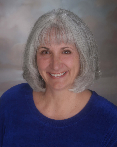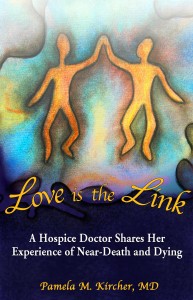 Pamela M. Kircher, MD, is a childhood Near-Death Experiencer as well as a Hospice Physician. For over 20 years, she has worked with people with NDEs and spoken internationally about the profound effects that mystical experiences and being with the dying have on our daily lives and how we live those lives. In this updated version of Love is the Link: A hospice doctor shares her experience of near-death and dying, she shares how the fields of NDEs and the hospice movement have evolved since the original version of the book. She also reflects on how her own NDE continues to influence her life. Hew newly updated book is now available as an ebook and can be downloaded free on Amazon on March 26, 29, and 30.
Pamela M. Kircher, MD, is a childhood Near-Death Experiencer as well as a Hospice Physician. For over 20 years, she has worked with people with NDEs and spoken internationally about the profound effects that mystical experiences and being with the dying have on our daily lives and how we live those lives. In this updated version of Love is the Link: A hospice doctor shares her experience of near-death and dying, she shares how the fields of NDEs and the hospice movement have evolved since the original version of the book. She also reflects on how her own NDE continues to influence her life. Hew newly updated book is now available as an ebook and can be downloaded free on Amazon on March 26, 29, and 30.
Dr. Kircher lives with her husband on a ranch in southern Colorado. To learn more about her, go to her website, www.pamkircher.com.
Near-Death Experience (NDE)
After a Near-Death Experience (NDE) during an episode of meningitis at age 6, like most people with a NDE, I found my world forever changed. My fear of death was erased, my interest in living from love greatly increased. My particular version of a life of service has included being a family practice and hospice doctor, talking with health care professionals about the reality and importance of NDEs, introducing integrative medicine into the hospital setting, and providing Tai Chi for Health to thousands of people through my work as a Master Trainer in Dr. Paul Lam’s Tai Chi for Health programs.
When I began publicly speaking about NDEs in the 1980’s, people began sharing their stories and I wrote them down after each encounter. As these stories accumulated over the next 6 years, I knew that they should be shared with a larger audience to inspire us all to expand our view of reality. Here is one of those stories:
 “A nurse had cared in the hospital for a terminally-ill adolescent for six months prior to the teenager’s death. One night at 2:35 a.m. the nurse awoke at home from a sound sleep and felt that the boy was standing next to her bed. She could see him very clearly and was surprised to see that he was wearing a new baseball cap. She asked him what he was doing in her room. The boy said that he had come to tell her that he was all right and that the nurse should hug his mother for him when she saw her in three months. The nurse then went back to sleep, thinking that she must have had a very vivid dream. She couldn’t shake the feeling the next morning, so she called the hospital to check on the boy. After a long pause, the other nurse told her that the boy had died unexpectedly at around 3 a.m.
“A nurse had cared in the hospital for a terminally-ill adolescent for six months prior to the teenager’s death. One night at 2:35 a.m. the nurse awoke at home from a sound sleep and felt that the boy was standing next to her bed. She could see him very clearly and was surprised to see that he was wearing a new baseball cap. She asked him what he was doing in her room. The boy said that he had come to tell her that he was all right and that the nurse should hug his mother for him when she saw her in three months. The nurse then went back to sleep, thinking that she must have had a very vivid dream. She couldn’t shake the feeling the next morning, so she called the hospital to check on the boy. After a long pause, the other nurse told her that the boy had died unexpectedly at around 3 a.m.
“The nurse had nearly forgotten the “dream” when she was attending a funeral of another patient three months later. The first patient’s mother walked up to her at the cemetery—even though she had always sworn that if her son died, she would never return to that city. The nurse told her about her vision and asked if she had ever seen that baseball cap. The mother laughed and said that she had bought the hat for her son, but had not yet had time to take it to the hospital on the night that her son died. She said that she, too, had felt the presence of her son intermittently over the past three months. It was very comforting to her that her son had wanted to reassure her, but still puzzling as to how he knew about the baseball cap and how he knew that his mother would be in the city in three months and would meet the nurse at that time.”
Love is the Link
The original version of Love is the Link: A hospice doctor shares her experience of near-death and dying was written some 18 years ago. This updated version retains the original timeless stories of people forever changed by their NDEs or other spiritually transformative experiences (STEs.) It goes on to discuss how healthcare professionals have gone from considering NDEs and STEs as aberrant psychological events to an awareness that a NDE occurs in one out of five people who have a cardiac arrest, that thousands of people have had them, and that they are life-changing events that deserve respect. It discusses how healthcare providers can be of assistance to people who had had NDEs and other avenues of assistance in integrating the experience.